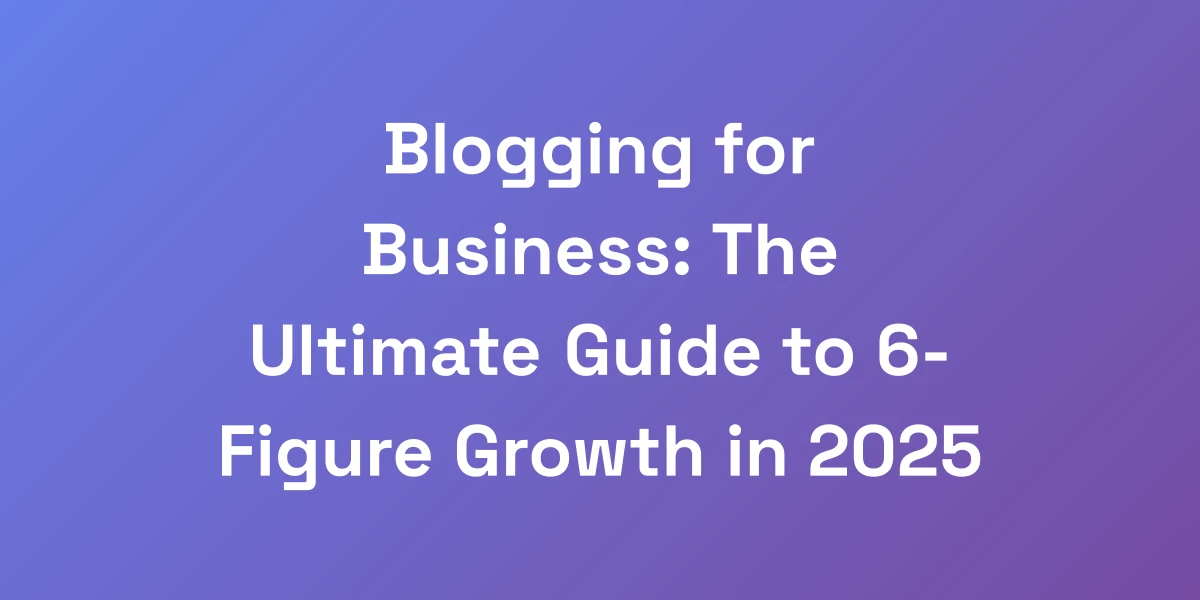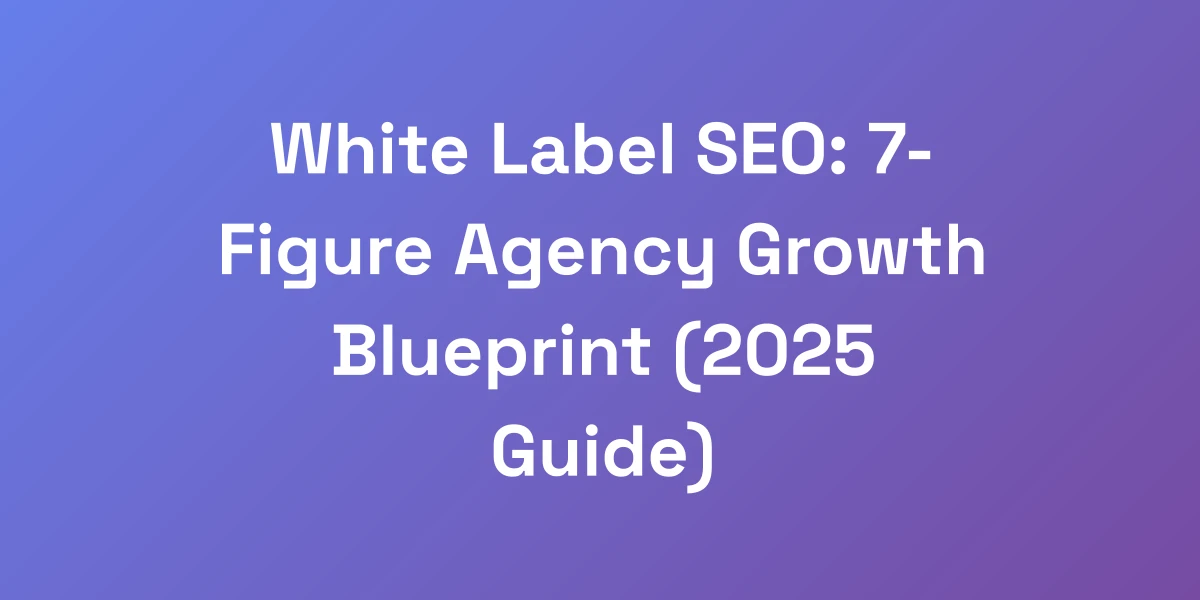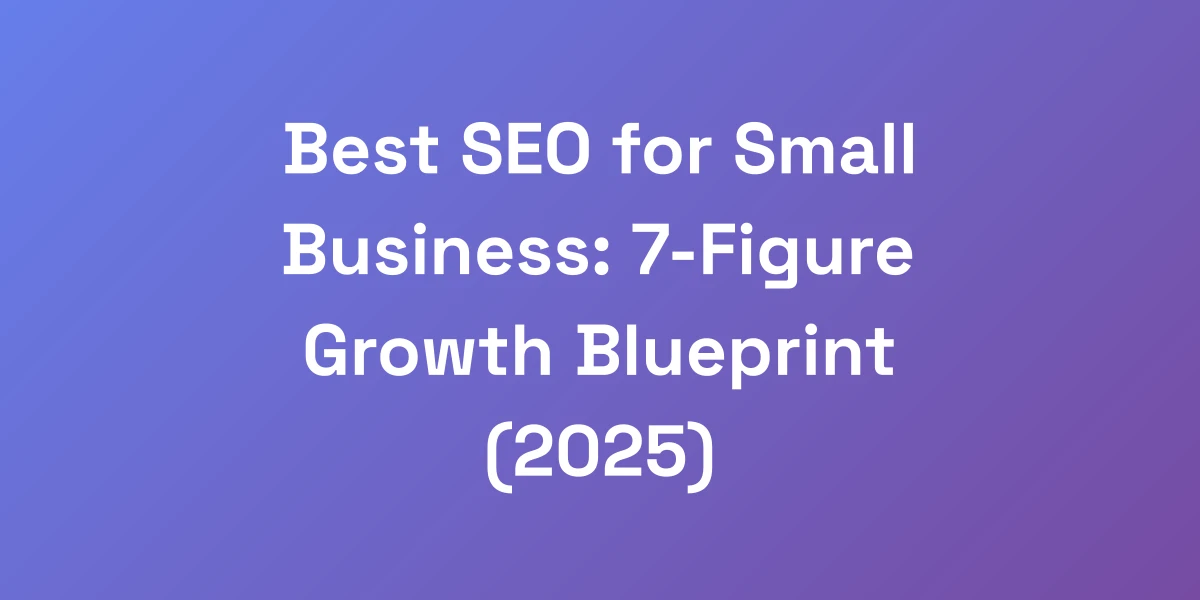
The Ultimate SEO Blueprint for Online Retailers: 7-Figure Growth Guide
Apr 8, 2025 | By [email protected]
Introduction
Ready to take your online retail game to unprecedented heights? It’s time to stop leaving millions in revenue on the table.
Most online retailers are stuck in a cycle of mediocre SEO tactics that yield minimal results. But what if you could break free and implement strategies that have generated over $100M in revenue for top e-commerce brands?
Welcome to our 7-Figure Growth Guide. This isn’t about following generic “best practices” that everyone else is using. It’s about mastering the game-changing principles that separate 6-figure stores from 7-figure empires.
We’re diving deep into the core of SEO for online retailers, addressing the real challenges and providing actionable strategies that work. Are you ready to transform your online store into a conversion machine? Let’s get started.
Why Most Online Retailers Fail at SEO (And How to Win)
Let me hit you with some truth: 90% of online retailers are leaving millions in revenue on the table because they’re doing SEO wrong. We’ve helped countless e-commerce businesses scale to 7-figures through SEO, and here’s the reality – it’s not about following generic “best practices.” It’s about understanding the game-changing principles that separate 6-figure stores from 7-figure empires. In this guide, we’re going to show you exactly how to implement the same SEO strategies that have generated over $100M in revenue for our clients.
The Hidden Cost of Poor SEO Implementation
Imagine pouring resources into your online store, yet seeing little to no return on your SEO efforts. That’s what poor SEO implementation looks like. The hidden costs include:
- Lost organic traffic due to inefficient keyword targeting.
- Decreased user engagement from poorly optimized content.
- Missed opportunities in capturing high-intent customers.
Take, for example, Hidden Botanics. With NUOptima’s e-commerce SEO case study, they saw a 144.92% increase in purchases and a 139.78% rise in total revenue. These aren’t just numbers—they represent real growth from getting SEO right.
Common SEO Mistakes Killing Your Online Store
Let’s face it, many store owners are unknowingly sabotaging their growth with these common mistakes:
- Ignoring keyword research: Without targeting the right keywords, your content won’t reach the right audience.
- Duplicate content: This confuses search engines and dilutes your SEO efforts.
- Poor site architecture: A tangled website makes it difficult for users and search engines to navigate.
Van Dyke & Bacon saw their sales double and organic traffic surge by 700% by simply addressing these issues. It’s not rocket science; it’s about refining the fundamentals.
The 80/20 Rule of E-commerce SEO
In e-commerce SEO, 80% of your results come from 20% of your efforts. Focus on what truly drives traffic and conversions:
- High-impact keywords: Target those with the best balance of search volume and competition.
- Optimized product pages: These are your primary conversion vehicles.
- Technical SEO: Ensure your site is fast, mobile-friendly, and properly indexed.
Zestard helped a home improvement client grow from £12,673 to £99,916 monthly with focused SEO efforts. It’s about prioritizing the right actions for maximum impact.
Key Performance Metrics That Actually Matter
To measure your SEO success, focus on metrics that reflect real business growth:
- Organic traffic: The lifeblood of your online store.
- Conversion rates: Turning visitors into customers.
- Revenue from SEO: Direct trackable sales from search efforts.
Tracking these metrics helps you understand what’s working and where to allocate resources for the best ROI.
Setting Up Your SEO Foundation Right
Your SEO foundation is crucial. Here’s how to lay it down correctly:
- Conduct comprehensive keyword research: Identify terms your customers are searching for.
- Optimize your site architecture: Ensure it’s logical and user-friendly.
- Implement robust on-page SEO: Meta tags, headers, and content development strategies are key.
Proper setup prevents costly mistakes down the road and sets the stage for scalable growth.
Product Page Optimization That Converts Like Crazy
Listen up, because this is where most online retailers completely miss the mark. Your product pages aren’t just catalog entries – they’re your 24/7 sales team. We’re here to show you how to turn every product page into a conversion machine that ranks and sells. We’ve tested these strategies across hundreds of stores, and they’ve consistently delivered 3-5x improvements in organic traffic and sales. This isn’t theory – it’s battle-tested methodology that works.
Crafting Irresistible Product Titles That Rank
Your product titles are the first impression. They need to be both catchy and optimized.
- Include primary keywords: Ensure your main keyword is naturally included.
- Be descriptive: Clearly describe what the product is.
- Keep it concise: Avoid overly long titles that can confuse shoppers.
For instance, RC Vision doubled their sales by refining product titles to include targeted keywords while maintaining clarity and appeal.
Writing Product Descriptions That Sell
A good product description does more than list features – it sells solutions.
- Focus on benefits: Highlight how the product solves a problem.
- Use persuasive language: Encourage the customer to imagine owning the product.
- Incorporate keywords naturally: Enhance SEO without sacrificing readability.
Hidden Botanics saw a 144.92% increase in purchases by shifting their descriptions to be more benefit-focused and SEO-friendly.
Strategic Keyword Placement Without Stuffing
Keyword placement is an art. Overstuffing can kill user experience and SEO.
- Natural integration: Ensure keywords flow seamlessly within the content.
- Focus on key areas: Titles, headers, and first 100 words are prime spots.
- Use LSI keywords: Incorporate related terms to enhance context.
Proper placement improves rankings and keeps your content engaging. Companies like Zestard have mastered this balance, leading to significant traffic boosts.
Optimizing Product Images for Search
Images aren’t just for aesthetics; they play a crucial role in SEO and conversions.
- Use high-quality images: Ensure clarity and professionalism.
- Compress images: Fast loading times are essential for user retention.
- Alt tags with keywords: Improve image search rankings.
Embedded optimized images can enhance visibility, as seen with Shopify brands like Sixty-Nine, which saw increased engagement through better visual content.
Leveraging Social Proof for Better Rankings
Social proof builds trust and can directly influence both SEO and sales.
- Customer reviews: Display ratings and testimonials prominently.
- User-generated content: Encourage customers to share their experiences.
- Trust badges: Showcase certifications and security seals.
Incorporating these elements can boost conversions by 28%, as user-generated content increases credibility and encourages purchases.
Advanced Schema Markup Tactics
Schema markup is a powerful tool for enhancing your product pages.
- Product schema: Includes details like price, availability, and reviews.
- Offer schema: Highlights discounts and special promotions.
- Review schema: Enhances credibility with user ratings.
Implementing these advanced tactics, such as new schema markup types introduced in 2023 and schema.org product types, can lead to rich snippets, which increase click-through rates by up to 40%, directly impacting your traffic and sales.
Technical SEO Secrets for E-commerce Domination
Here’s the thing about technical SEO – most “experts” overcomplicate it. But we’ve discovered that focusing on just five critical technical elements can deliver 80% of the results. We’re talking about the same framework that helped one of our clients go from 50K to 500K monthly organic visitors in just 6 months. The best part? You don’t need to be a coding genius to implement these changes.
Site Architecture That Google Loves
A well-structured site is easier for search engines to crawl and index.
- Hierarchy: Organize your site in a logical manner with clear categories and subcategories.
- URL structure: Use clean, descriptive URLs that reflect the site hierarchy.
- Breadcrumbs: Enhance navigation and provide context for both users and search engines.
Proper architecture not only improves SEO but also enhances the user experience, leading to higher dwell times and lower bounce rates.
Mobile Optimization Techniques
With over 58% of e-commerce site visits coming from smartphones, mobile-first indexing is non-negotiable. It significantly affects your site’s rankings, as detailed in this article on OnCrawl.
- Responsive design: Ensure your site adapts seamlessly to all screen sizes.
- Touch-friendly navigation: Make it easy for users to interact on mobile devices.
- Fast load times: Optimize images and use efficient coding practices to enhance speed.
Walmart improved their mobile page speed by one second, resulting in a 2% increase in conversions. Small changes can lead to significant impacts.
Speed Optimization for Higher Rankings
Page speed is a critical factor for both user experience and SEO.
- Minimize HTTP requests: Reduce the number of elements on your page to speed up load times.
- Enable compression: Use Gzip to compress files and reduce their size.
- Optimize images: Compress images without sacrificing quality.
Each second of delay can reduce conversion rates by up to 7%. Tools like Google PageSpeed Insights can help identify and fix speed issues.
Internal Linking Strategy for E-commerce
Internal links help distribute page authority and guide users through your site. Integrating [white label link building services](https://autoseo.io/blog/whitelabel-linkbuilding/) can further enhance your overall link strategy.
- Contextual linking: Link related products and content within your pages.
- Avoid orphan pages: Ensure every page is linked from at least one other page.
- Use descriptive anchor text: Improve SEO and user understanding.
A robust internal linking strategy can enhance your SEO by making it easier for search engines to crawl your site and for users to navigate seamlessly.
Handling Product Variations Without Duplicate Content
Managing product variations can lead to duplicate content issues if not handled correctly.
- Use canonical tags: Specify the preferred version of a page to prevent duplication.
- Create unique content: Differentiate each variation with unique descriptions and images.
- Leverage URL parameters: Manage variations through controlled URL structures.
By addressing duplicate content, you ensure that your SEO efforts are not diluted and that each product variation can rank effectively.
XML Sitemap Optimization
Your XML sitemap is a roadmap for search engines to crawl your site effectively.
- Include all important pages: Ensure every critical page is listed in the sitemap.
- Keep it updated: Automatically update your sitemap as your site changes.
- Submit to search engines: Use Google Search Console and Bing Webmaster Tools to submit your sitemap.
A well-optimized sitemap improves your site’s crawlability, ensuring that all your important pages are indexed and ranked.
Content Strategy That Drives Qualified Traffic
Most online retailers think content marketing means throwing up a blog and hoping for the best. Dead wrong. We’re here to show you how to create a content ecosystem that not only ranks but pre-sells your products 24/7. This is the exact system we used to help an online retailer generate an additional $2.1M in revenue through organic content alone. It’s about creating content that serves both search engines and buyers.
Creating Category Pages That Convert
Category pages are more than just a list of products—they’re a powerful tool for both SEO and conversions.
- Optimize for keywords: Target broad keywords that capture the essence of the category.
- Include descriptive content: Provide valuable information that helps users navigate the category.
- Use high-quality visuals: Enhance user engagement with relevant images and videos.
Effective category pages can significantly boost organic traffic by ranking for high-volume keywords while driving conversions through optimized content.
Blog Content That Drives Sales
A blog can be a powerful tool for driving both traffic and sales when utilizing automated blogging systems.
- Address customer pain points: Write about topics that solve your audience’s problems.
- Integrate product mentions: Seamlessly include your products within the content.
- Optimize for SEO: Use targeted keywords and internal links to improve visibility.
By focusing on value-driven content, you can attract qualified traffic that is more likely to convert.
Buyer’s Guides That Rank
Buyer’s guides are a fantastic way to provide value and drive sales.
- Comprehensive coverage: Ensure your guides cover all aspects of the purchasing decision.
- Include actionable advice: Help customers make informed decisions with clear recommendations.
- Optimize for long-tail keywords: Capture search queries that indicate purchase intent.
These guides not only help your customers but also position your site as an authority, boosting your SEO and driving conversions.
Leveraging User-Generated Content
User-generated content (UGC) can be a goldmine for SEO and user trust.
- Encourage reviews and testimonials: Showcase real customer experiences.
- Feature user photos: Display images of customers using your products.
- Integrate UGC into product pages: Enhance credibility and engagement.
UGC not only boosts SEO by providing fresh content but also builds trust with potential customers, increasing the likelihood of conversions.
Content Distribution Strategy
Creating great content is only half the battle—it needs to be effectively distributed to reach your audience.
- Social media marketing: Share your content across relevant platforms.
- Email marketing: Utilize newsletters to distribute valuable content to your subscribers.
- Content partnerships: Collaborate with other brands or influencers to amplify your reach.
Strategic distribution ensures that your content reaches the right people, driving qualified traffic and boosting your SEO efforts.
Measuring Content ROI
To ensure your content strategy is effective, you need to measure its return on investment (ROI).
- Track key metrics: Monitor organic traffic, engagement rates, and conversion rates.
- Use analytics tools: Leverage tools like Google Analytics to gain insights.
- Adjust based on performance: Continuously refine your strategy based on what works best.
By measuring ROI, you can identify which content pieces are driving the most value and allocate resources accordingly.
Advanced E-commerce SEO Tactics for Scale
Want to know what separates 7-figure stores from 8-figure empires? It’s these advanced tactics that 99% of your competitors don’t even know exist. We’re talking about cutting-edge strategies that can literally double your organic traffic in months. These are the same techniques we’ve used to help stores dominate highly competitive niches and crush their bigger competitors, similar to specialized strategies in Airbnb SEO techniques.
International SEO for Global Markets
Expanding into international markets can skyrocket your growth, but it requires a tailored SEO approach.
- Localized content: Translate and adapt your content to fit local cultures and languages.
- Hreflang tags: Implement hreflang tags to inform search engines about language and regional targeting.
- Local keyword research: Identify and target keywords that are relevant in each market.
By optimizing for international markets, you can tap into new revenue streams and significantly increase your overall traffic and sales.
Voice Search Optimization
With over 50% of online searches being conducted via voice in 2024, optimizing for voice search is crucial.
- Focus on natural language: Optimize for conversational queries that users are likely to speak.
- Use long-tail keywords: Capture the more specific and lengthy queries common in voice searches.
- Ensure mobile optimization: Most voice searches are done on mobile devices, so a mobile-friendly site is essential.
Voice search optimization can help you capture this growing segment, keeping your store accessible and competitive.
AI-Powered SEO Automation
Leverage AI tools to streamline and enhance your SEO efforts.
- Automate keyword research: Use AI tools to identify high-potential keywords quickly.
- Content generation: Utilize AI to assist in creating optimized content efficiently.
- Predictive analytics: Forecast trends and adjust your strategies proactively.
AI-powered automation can save time and increase the accuracy of your SEO strategies, allowing you to scale more effectively.
Competitive Gap Analysis
Understanding where your competitors excel and where they fall short can provide valuable opportunities for your SEO strategy.
- Identify competitors: Determine who your main SEO competitors are.
- Analyze their strengths: Look at what they’re doing well in terms of content, keywords, and backlinks.
- Find their weaknesses: Identify gaps in their strategy that you can capitalize on.
By conducting a thorough competitive gap analysis, you can uncover opportunities to outperform your rivals and capture more market share.
Featured Snippet Optimization
Featured snippets can significantly boost your visibility and traffic.
- Target question-based queries: Optimize content to answer common questions in your niche.
- Use structured data: Implement schema markup to help search engines understand your content.
- Format for snippets: Use lists, tables, and concise paragraphs to enhance your chances of being featured.
Featured snippets not only increase your chances of appearing at the top of search results but also drive more qualified traffic to your site.
E-commerce SEO Tools Worth the Investment
Investing in the right SEO tools for online retailers in 2024 can streamline your efforts and provide valuable insights. According to a market research report by search engine optimization (SEO) tools market, the industry is growing rapidly.
- Google Analytics: Track and analyze your website traffic.
- SEMrush: Comprehensive tool for keyword research, site audits, and competitor analysis.
- Ahrefs: Powerful tool for backlink analysis and content research.
Using these tools effectively can enhance your SEO strategy, providing the data and insights needed to make informed decisions and drive growth.
Conclusion
We’ve walked you through the ultimate SEO blueprint for online retailers, unveiling the strategies that can propel your store to 7-figure success. From optimizing product pages that convert like crazy to leveraging advanced technical SEO tactics, every element of this guide is designed to drive qualified traffic and increase conversions.
Remember, it’s not just about following best practices; it’s about understanding and implementing the game-changing principles that can differentiate your store from the competition. Start laying a solid SEO foundation, refine your content strategy, and implement advanced tactics to scale your business to new heights.
Ready to transform your online retail business? Start implementing these strategies today and watch your revenue soar. Have questions or need further guidance? Engage with us in the comments below, share your experiences, and let’s grow together.








